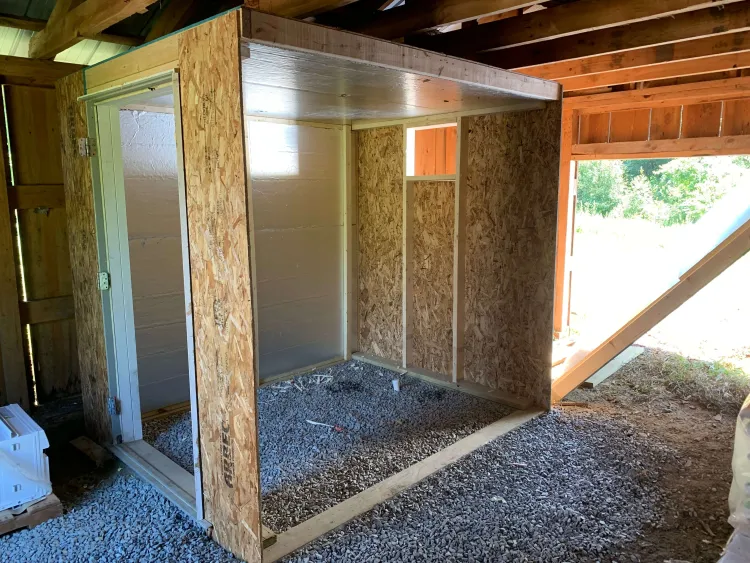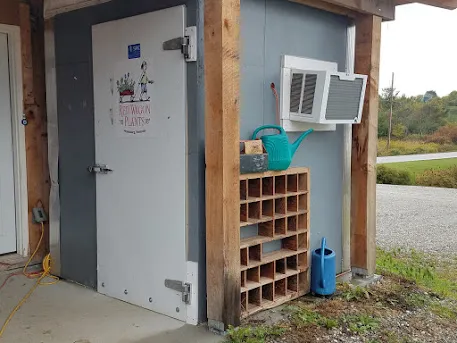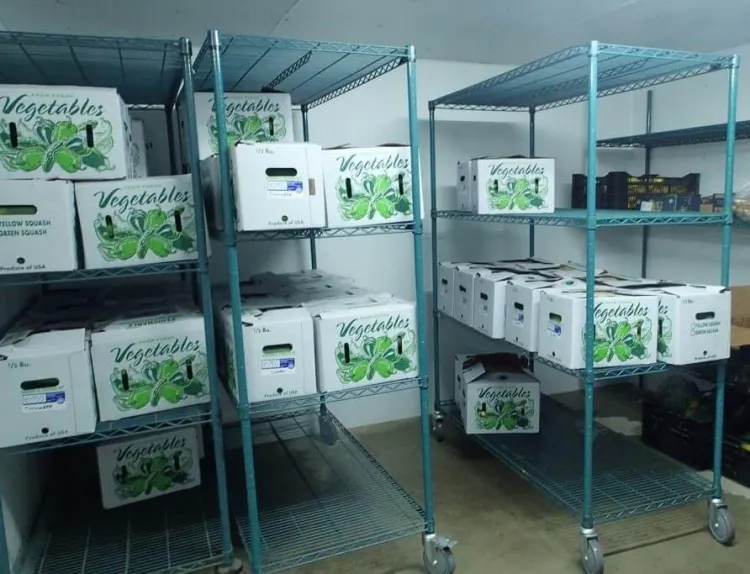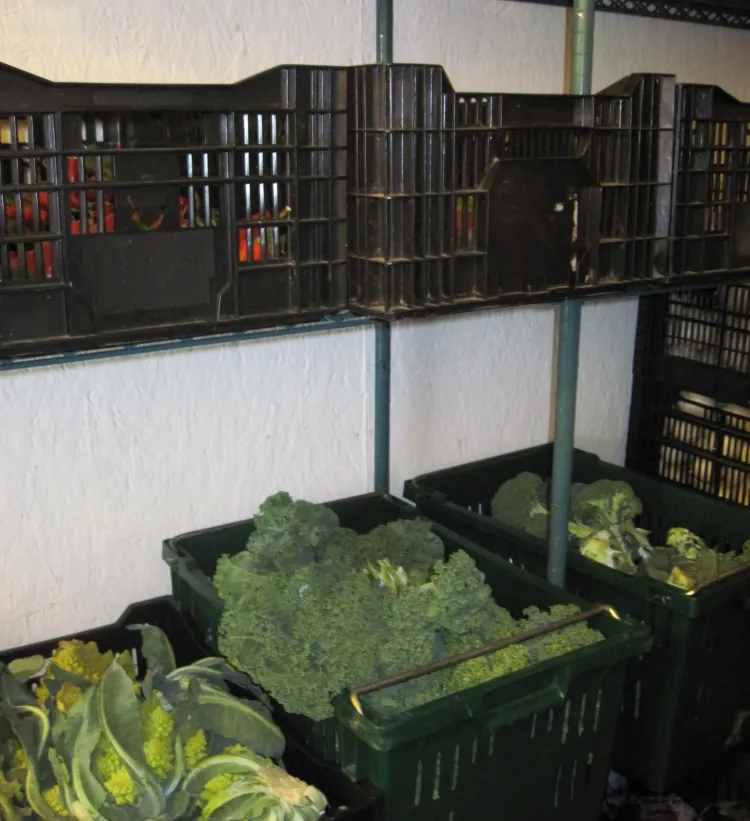Cold storage reduces the need to harvest perishable produce immediately prior to delivery or retail marketing. This provides flexibility in harvest schedules, reducing stress associated with labor availability, unfavorable weather, and unpredicted changes in market demand. Cold storage also slows microbial activity, reducing the rate of decay and the potential growth of human pathogens. Cold storage units must be properly managed to avoid risk of cross-contamination, product spoilage, and the growth of human pathogens, such as Listeria.

Design Goals
- Circulate air to assure uniform temperature and humidity.
- Cold storage space is easy to access.
- Condensate does not drip on produce or pool on floor.
- Compressors/Coolbot can maintain a stable, optimal temperature for the crops in storage.
- Humidity is maintained by minimizing product moisture loss rather than adding water to unit.
- All surfaces are easy to clean and dry when not filled; unit smells fresh and is mold-free.
- Product is stored off the ground.
- Unit is well-sealed to prevent entry of rodents or other pests.
Design Elements
- Cooler is either large enough to allow air to passively circulate around stored product, or have one or more fans to help push air through tight spaces. Space between product and walls should be at least 6".
- Cooler should be in the wash pack or as close as possible, the door should be wide (min. 36“), and ideally accessible by wheeled carts or dollies (ramp or ground level).
- Crop humidity is maintained with flip-top or solid-lidded containers or clean covering, rather than by wetting floors and walls.
- Drainage is in place to allow excess water to be easily removed.
- If AC unit with Coolbot is used, it is pitched to drain outside and set to minimize ice-up of fins.
- If compressor is used, evaporator pans are cleaned regularly, and condensate drains outside.
- One or more accurate thermometers allow for reliable observation and tracking of temperature.
- Cooler has no gaps or chewable materials that allow rodent entry (e.g. hardware cloth in corners).
- Envelope is sealed inside and outside to prevent condensation of water within walls.
- Cooler walls have a minimum R-20 insulation for energy efficiency.
- Shelves or floor pallets are sized to fit storage containers and keep them off the floor.
- Lighting is shatter proof and bright enough to read product labels and evaluate product quality.
Benefits
- Decreased food safety risk
- Increased product shelf life
- Flexible harvest schedule, reducing stress when conditions are not optimal
Photos



Related Resources
- Cooler Construction Options—Wall and Panels. UVM Extension Ag (agricultural)Engineering
- Coolbots ™: Inexpensive Cold Storage. UVM Extension Ag Engineering
- Preventing Freezing in Coolers. UVM Extension Ag Engineering
- Simple DIY Outside Air Exchange. UVM Extension Ag Engineering
- Case Study DIY Build: Coolbot on a Shoestring. UVM Produce Safety Portal
- Cold Storage: Workshop and Produce Quality Workshop Presentation(Billy Mitchel, Local Food Safety Collaborative (LFSC)
Authors: Hans Estrin and Vern Grubinger, UVM Extension
This work is supported by the Food Safety Outreach Program Name, project award no. 2023-70020-40688, from the U.S. Department of Agriculture’s National Institute of Food and Agriculture. Any opinions, findings, conclusions, or recommendations expressed in this publication are those of the author(s) and should not be construed to represent any official USDA or U.S. Government determination or policy.
